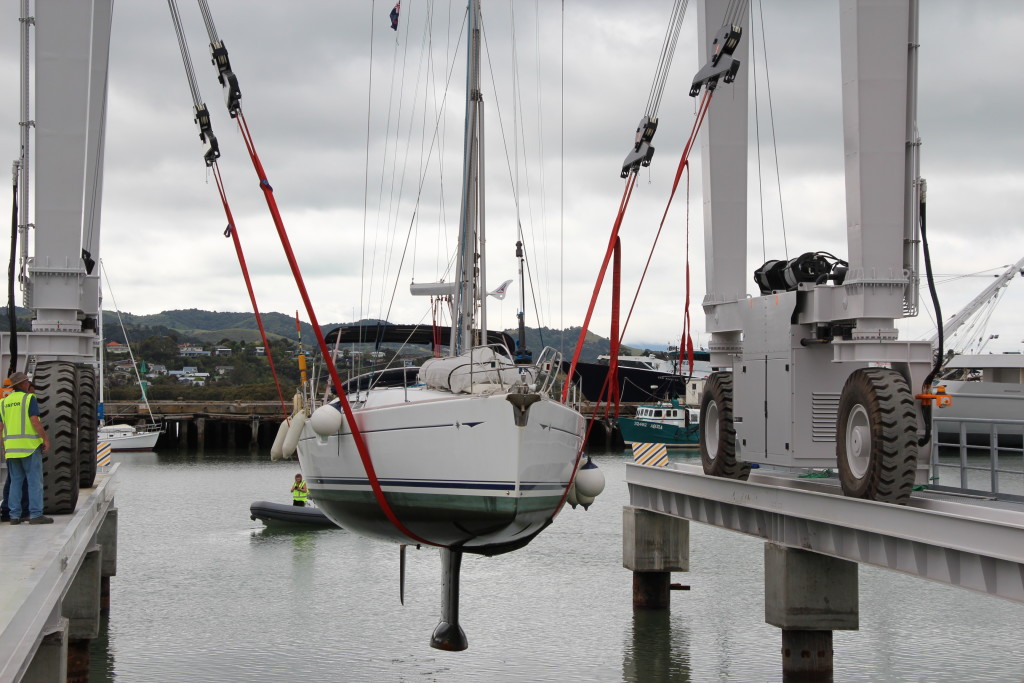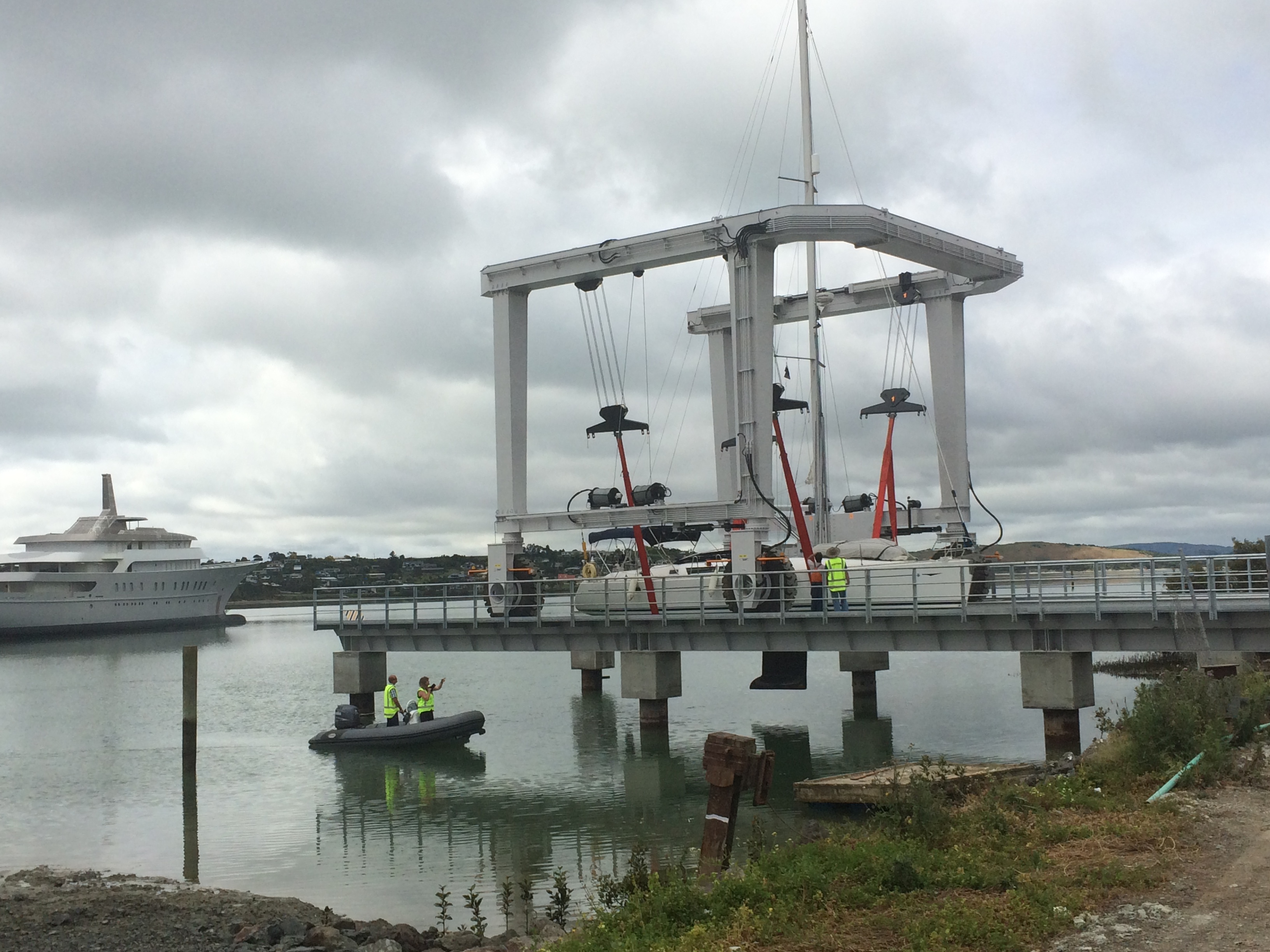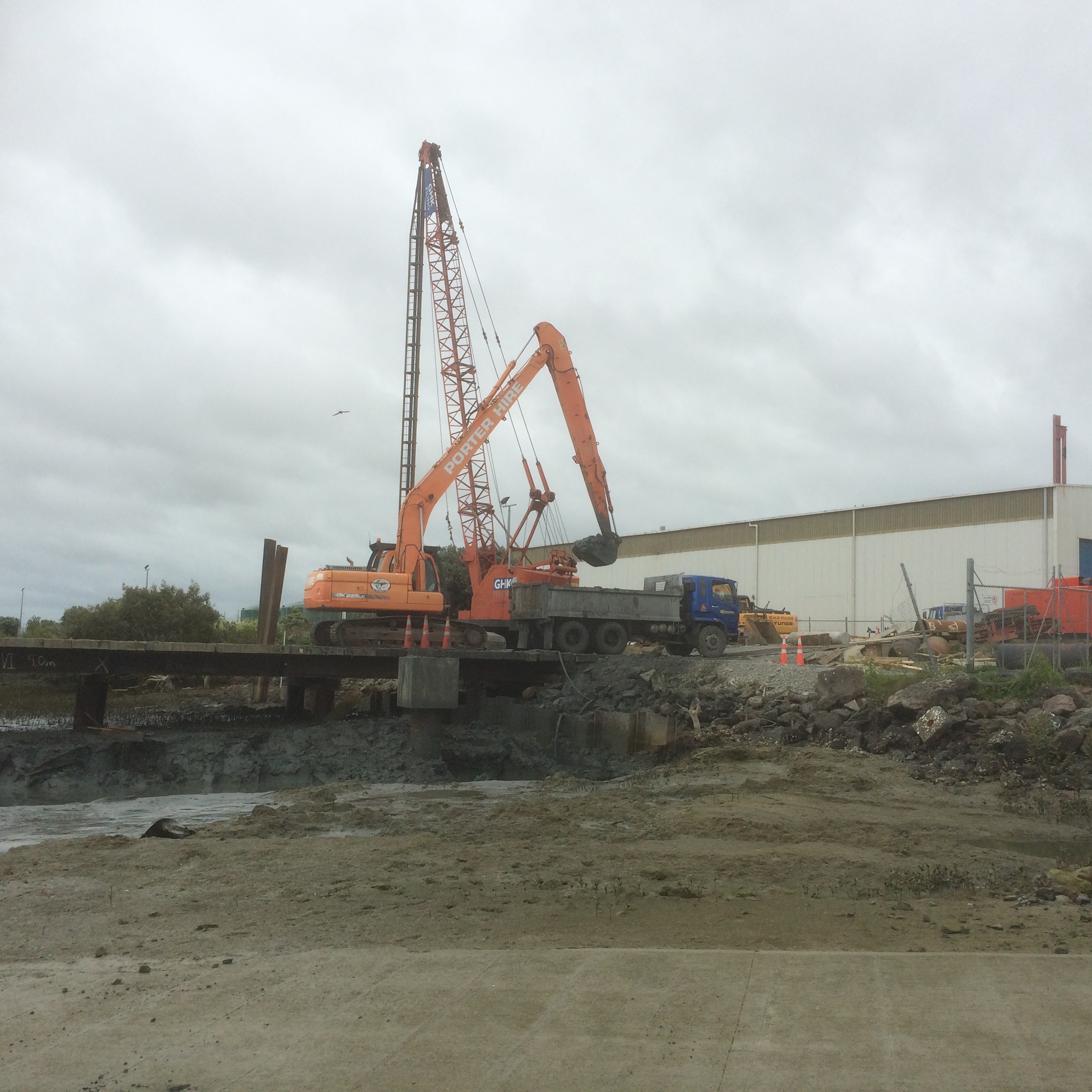The project to construct the sheet piled seawall, foundations, pile caps and dredge the seabed for a new 100T rated boat haul for Oceania Marine. The large remote-control operated haul out machine had been purchased and imported but there was a need for the ground work to be established so that the specialised machine could have access out over the water to the boats.
The project involved the installation of 8 off 750mm diameter steel CHS pile casings which had to be driven to refusal at the rock layer below the marine mud. We suggested the methodology of bottom driving the piles as this meant the piles were sealed throughout the driving process and the spoil did not need to be removed from the centre of the pile prior to pouring. This methodology mitigated the environmental impact of the job as there was no turbidity caused as a result of the piling actions and also bottom driving created significantly less noise that would be caused by a conventional drop hammer or hydraulic hammer. The client did not undertake a geotechnical report prior to the project and the piles were originally estimated that the casings would require an embedment of 24.0m – 27.0m before rock would be reached. This estimate was based on piling works that had been done in the vicinity of the project in the past, however, the piles needed an embedment of up to 39.0m before refusal was met. We were able to undertake this additional piling whilst still achieving completion in time for the opening date of the facility.
We were able to leave the pile casing above the highest tide level which meant there were no quality issues with trying to pour concrete underwater in a marine environment. The piles were poured using a boom pump to tremie the concrete to ensure no segregation occurred to the concrete due to it falling from a height through the reinforcing cage. Once this concrete had cured we were then able to cut the casing down to the correct height to accept the pile caps.

There were significant challenges on this project; the main one being working in a tidal and marine environment. The tidal environment meant that the ever changing tides would often submerge a large part of the construction site. Some of the foundations were below sea level so to combat this, a cofferdam was built out of a modified shipping container to keep the water out so that the staff could continue to work when the tide was in. This also protected our form and steel work from being exposed to the sea water before it could be poured as any potential contamination or spills had to be monitored closely at all times. A spill kit was kept on site to ensure a swift response in the event of any spill.
Another challenge was working from a temporary structure. To get our machinery over the marine mud to allow the piling to be undertaken, a temporary structure was built. We developed how we wanted to construct the temporary staging and had this verified for adequacy by a structural engineer to ensure the temporary stage would be structural adequate to service the loads applied from the construction methodology. This temporary structure had to be removed on completion of the piling and dredging works so the staging had to be designed with this in mind. The temporary staging was also utilised for the dredging component of the works as a long reach excavator could be used from the staging. The client had originally planned to undertake all dredging by barge and utilising the staging that was needed for the piles saved the client significant time and cost on this component of the works.
The most innovative part of this project was the use of the bottom driven piling methodology and shipping container as a cofferdam to allow our staff to work through the tides. These methodologies allowed us to ensure that the environmental impact on the project was minimised, we were able to make full use of work hours, and quality was not compromised by protecting our foundation formwork from being waterlogged or damaged. The use of the temporary staging for the dredging also meant that the client got real value from the temporary works component which contributed significantly to the cost of the project yet doesn’t actually form part of the completed works.
The clients were extremely happy with the end result. Oceania Marine have indicated they would look to work with GHK in the future as a result of a good working relationship & a high quality end product.
“When Port Whangarei Marine Centre needed to install the infrastructure for their new 100T mobile boat hauler, several companies were looked at for the job. GHK pilling was chosen due to their knowledge and experience in this type of work.
The plan consisted of bottom driving a series of 750mm diameter piles down through the seabed to bed rock, some were as long as 39 meters. Steel beams were placed on top of these piles to act as a runway for the boat hauler to drive on. A seawall was also constructed by using a combination of sheet pilling and a rock revetment to retain the shoreline.
GHK also carried out the extensive dredging that was required to allow Port Whangarei Marine Centre to haul out deep drafted vessels at low tide.
The GHK team did a great job on the install of our piles and sea wall for our Travelift piers. The finished product was built to spec and was well finished off, leaving the site clean, tidy and well presented.
Weekly progress meetings were held to ensure we were on track and the job stayed within the quoted price. They were very easy to deal with and their good communication played a major role in the smoothness of this project.” Brad Hall – General Manager – Oceania Marine Ltd



